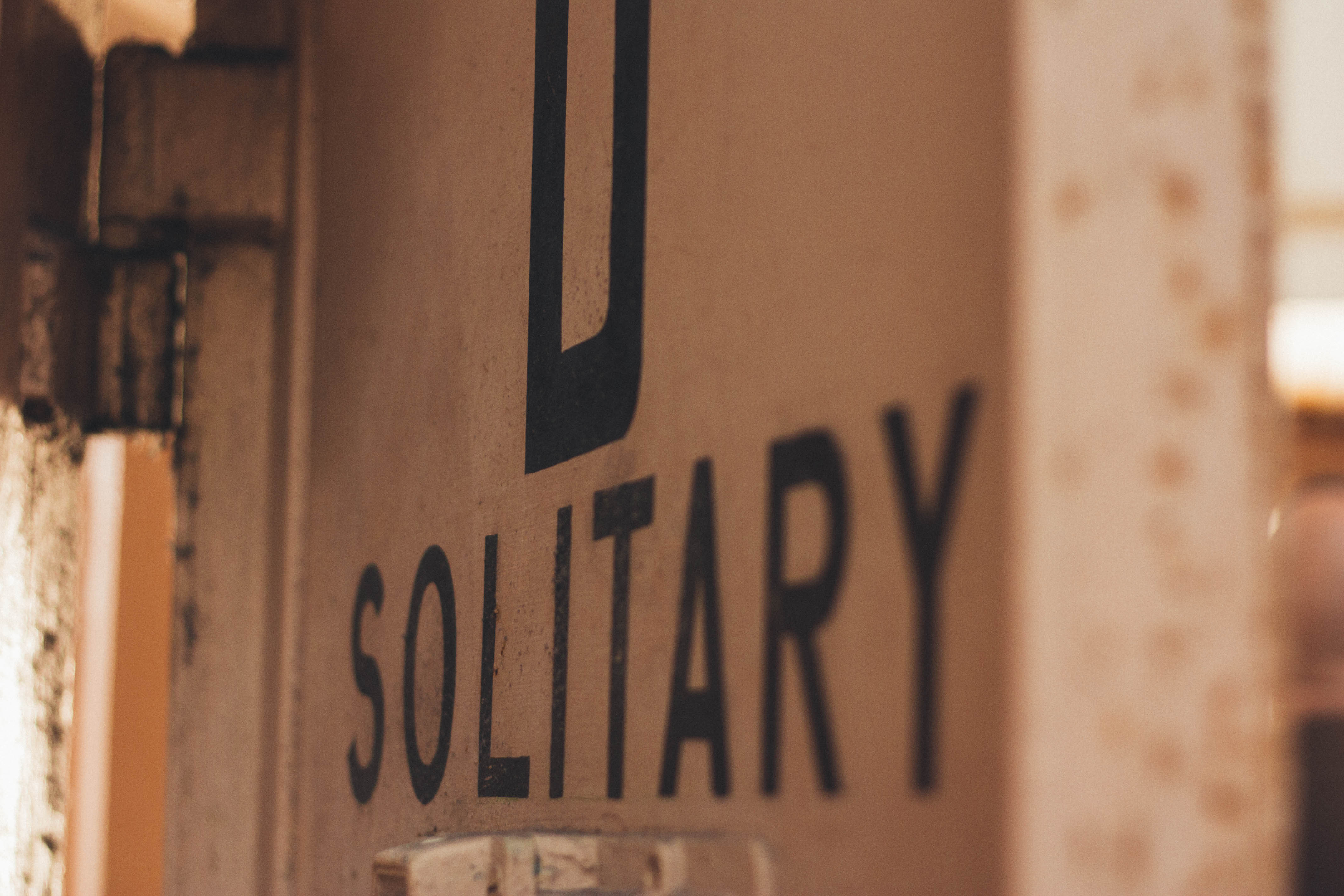Banning Solitary Confinement: A Step in the Right Direction

“Excessive bail shall not be required, nor excessive fines imposed, nor cruel and unusual punishments inflicted.” (Amendment VIII, Bill of Rights, 1789)
 Imagine spending your days in a windowless room, with nothing for company but a bed and possibly a book. Your only human contact is the voices down the hall and a peek of the hands that offer you a meal through a slit in the door. You have nothing to do but to sit and think, going days without talking, unless you opt to start talking to yourself. You know why you have been placed in this room, but eventually you begin to forget. Everything becomes a blur. Your mind starts to feel mushy, and the strong mental capacities you thought you had start to disappear. In other words, you start going crazy.
Imagine spending your days in a windowless room, with nothing for company but a bed and possibly a book. Your only human contact is the voices down the hall and a peek of the hands that offer you a meal through a slit in the door. You have nothing to do but to sit and think, going days without talking, unless you opt to start talking to yourself. You know why you have been placed in this room, but eventually you begin to forget. Everything becomes a blur. Your mind starts to feel mushy, and the strong mental capacities you thought you had start to disappear. In other words, you start going crazy.
To some, this may not be torture. But others may fully succumb to this harsh mental exercise, functioning as less-than-perfect citizens when they are finally allowed to reintegrate into society. Particularly at risk are youth, whose brains are still developing, and the mentally ill, who have initially weaker mental capacities.
When, in July 2015, Barack Obama became the first sitting president to visit a federal prison, he took note of such harsh punishment measures and decided to make a change. The President recently published an opinion piece in The Washington Post, outlining his plan to ban solitary confinement for juveniles as well as expand treatment services for the mentally ill in prison. Reminding readers of the United States’ image as the country of second chances and the government’s role of protecting its citizens, he emphasizes the long-lasting psychological effects that time in solitary can have on its prisoners. He believes that stripping them of the resources that could teach them how to deal with difficult situations has created dangerous persons. They may become completely antisocial and unable to recreate social contact, thus ruining any hopes of a “second chance”. Alternatively, they can turn to violence, towards themselves or others, and thus become a new obstacle for the government’s role as a protector. Obama also cites studies that have shown that states that have already taken significant measures to reduce the number of their prisoners in solitary have also seen a decrease in violent affronts towards staff.
Multiple international agreements have made torture or unusual cruel punishment illegal, such as the most recent UN Standard Minimum Rules for the Treatment of Prisoners (Mandela Rule), which has prohibited prolonged or indefinite solitary confinement. Furthermore, many European nations have recognized the horror of this practice and have shifted to focus on restorative justice. England, for example, makes use of “Close Supervision Centers”, small units with ten or fewer inmates where the focus is on mental health restoration and violence prevention. Meanwhile, Norway has adopted a system of restorative justice, where the offender does not always face harsh punishment and is instead treated as a “broken [person] to be fixed“. In its treatment of prisoners, the U.S. thus finds itself lagging behind other developed nations. This could be related to the problem of mass incarceration. According to the Prison Policy Initiative, local jails around the country see a total of 11 million people cycling in and out of their facilities, with the number of prisoners in all facilities at one particular point in time estimated at around 2.3 million. While prisoners keep flowing in to these establishments, the number of cells and staff is not seeing any such increase. Overcrowded prisons thus find themselves with scarce resources and, sometimes facing an absence of sufficient beds, place individuals in solitary cells out of convenience. This very problem may be solved by aiming to rework the incarceration system that is currently in place in the U.S. entirely.
From a utilitarian perspective, the resources needed to meet the standard necessities for solitary confinement is more costly. In solitary, where cells are occupied by one or two inmates, the residents need to have access to resources to maintain adequate hygiene and the high security nature of the cell represents a higher demand for prison staff. Furthermore, one could consider that restricting the number of inmates per cell to two would mark a significant loss of potential space for incoming prisoners. A Bloomberg View article makes the observation that the state of Mississippi had been able to save up to $5 million simply by reducing the amount of prisoners they kept in solitary confinement, bringing the number down to 300 from 1,300 in 2007.
From both an economic and moral point of view, it seems almost too obvious that this outdated practice should come to an end. Obama recognized this problem when he decided to ban it for juveniles. What we can hope he was thinking, however, is that this is only a foot in the door to a new prison where solitary confinement is simply a horror of the past.
